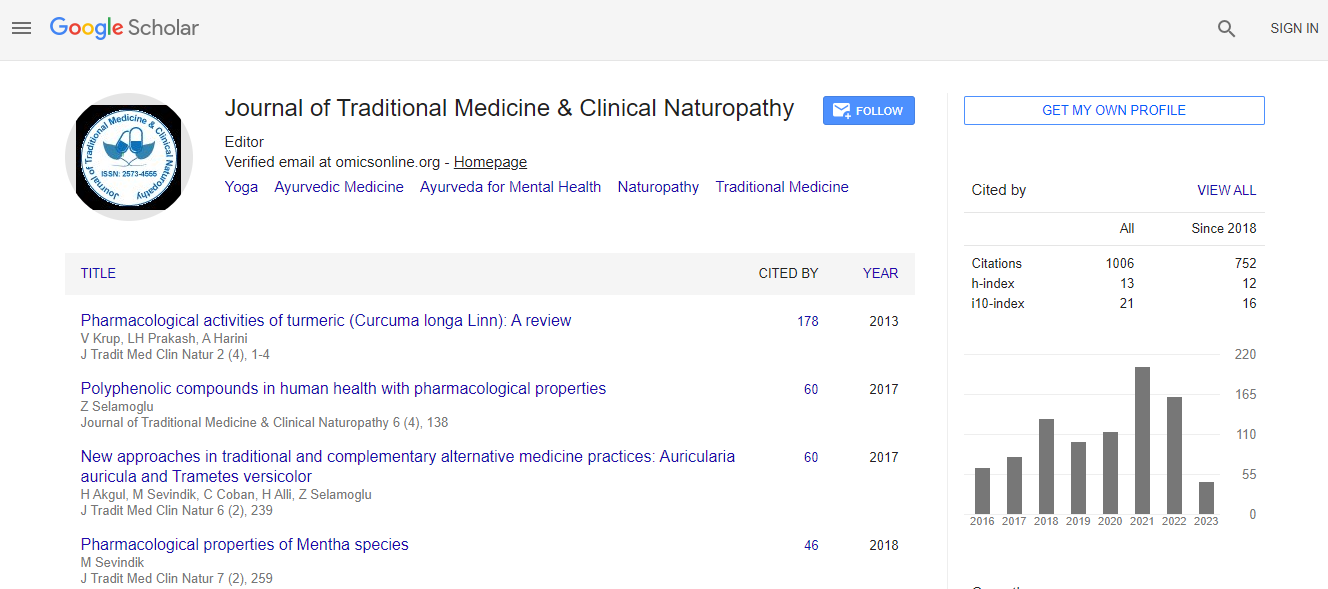Research Article
Preliminary Analysis of Botanical and Phytochemical Features of Kamalu - Root of Flemingia strobilifera (L.) W.T. Aiton
| Bidhan Mahajon1*, Remadevi R1, Sunil Kumar KN2 and Ravishankar B3 | |
| 1Department of Dravyaguna Vijnanam, Vaidyaratnam P. S. Varier Ayurveda College, Kottakkal, Kerala, 676501, India | |
| 2Pharmacognosy, SDM Centre for Research in Ayurveda and Allied Sciences, Laxminarayana Nagar, Kuthpady, Udupi, 574 118, India | |
| 3Department of Pharmacology and Toxicology, SDM Centre for Research in Ayurveda and Allied Sciences, Udupi, 574 118, India | |
| Corresponding Author : | Bidhan Mahajon PG Scholar, Department of Dravyaguna Vijnanam Vaidyaratnam P. S. Varier Ayurveda College Kottakkal, Kerala, 676501, India Tel: +91-8593038842 E-mail: bidhanmahajon@gmail.com |
| Received October 25, 2014; Accepted December 22, 2014; Published December 29, 2014 | |
| Citation: Mahajon B, Remadevi R, Sunil Kumar KN, Ravishankar B (2015) Preliminary Analysis of Botanical and Phytochemical Features of Kamalu - Root of Flemingia strobilifera (L.) W.T. Aiton. J Homeop Ayurv Med 4:171. doi: 10.4172/2167-1206.1000171 | |
| Copyright: © 2015 Mahajon B, et al. This is an open-access article distributed under the terms of the Creative Commons Attribution License, which permits unrestricted use, distribution, and reproduction in any medium, provided the original author and source are credited. | |
Abstract
Flemingia strobilifera (Fabaceae) is an important medicinal plant, commonly known as Kamalu in Malayalam and Kusrunt in Hindi. It is distributed in the region of the tropical area of India. Root of the plant is used for various ailments such as insomnia, epilepsy, ulcer, inflammation and microbial infection. However, Pharmacognostical standardization of this important medicinal plant has not been reported. Present study aims to characterize botanical and phytochemical features of the root, which could be used for the standard testing protocols in the future. Botanical and phytochemical features of root of this plant were analyzed. These features would be of great help in authentication and standardization of the raw drug. The phytochemical tests revealed the presence of carbohydrates, flavonoids, phenol, tannin, terpenoids, saponin, coumarins, quinone and steroids in the root of this plant. The HPLTC fingerprint obtained would be useful in chemical standardization of the raw drug of Kamalu.

 Spanish
Spanish  Chinese
Chinese  Russian
Russian  German
German  French
French  Japanese
Japanese  Portuguese
Portuguese  Hindi
Hindi 
